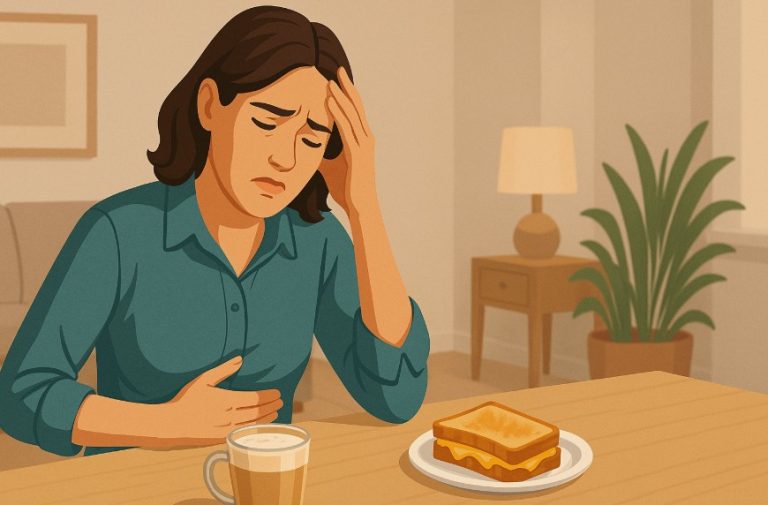Why do grapes, a fruit often praised for its nutritional benefits in humans, pose a life-threatening risk to dogs? Why can something so small, even just a single grape or raisin, trigger a cascade of symptoms that may end in acute kidney failure?
While pet owners have long been warned against feeding grapes to dogs, only in recent years have veterinary researchers come closer to understanding the true cause of this mysterious toxicity. The prevailing theory now points to tartaric acid, a naturally occurring compound in grapes, as the primary reason for this potentially fatal reaction.
Despite ongoing research, grapes and all their derivatives remain categorically unsafe for canine consumption. Understanding the reasons why and how they affect your pet’s health is essential to preventing tragic outcomes.
What Makes Grapes Harmful to Dogs?

The toxicity of grapes to dogs has puzzled veterinarians for over two decades. For years, the culprit remained unknown. What made it more perplexing was the inconsistency of reactions—while some dogs suffered fatal consequences from eating just one or two grapes, others appeared to be unaffected by larger quantities.
Recent discoveries, however, have revealed that tartaric acid and potassium bitartrate, naturally found in grapes, raisins, sultanas, and even grape leaves, are likely responsible for these reactions. These compounds can overwhelm a dog’s kidneys, leading to acute kidney injury (AKI) or complete renal failure.
These findings were brought to light by a case involving homemade playdough that contained cream of tartar. When a dog ingested this playdough and displayed symptoms identical to grape poisoning, it led researchers to connect the dots. This significant breakthrough has provided much-needed clarity on a longstanding veterinary mystery.
Can Dogs Eat Grapes, Raisins, or Grape Leaves in Any Form?
All grape-related products are considered dangerous for dogs. This includes fresh grapes, dried raisins, sultanas, currants, grape juice, jam, jelly, and even the leaves of the grapevine. Regardless of how they are processed or prepared—seeded or seedless, red or green, peeled, cooked, or raw—no form of grape is safe for canine consumption.
Additionally, grape by-products often found in energy bars, cereals, baked goods, and snack items are just as dangerous. Dogs that ingest raisins found in something as seemingly benign as raisin bread may still suffer the same toxic effects.
As for grape leaves, they too contain tartaric acid. While they are commonly used in Mediterranean cuisine, they should be kept far from pets. Until further research provides more clarity, the safest choice is to avoid all grape-based items entirely.
What Happens to a Dog’s Body After Eating Grapes?

When a dog consumes grapes or raisins, the effects can start to show within a few hours, although some cases may take longer. The toxin primarily targets the kidneys, impairing their function. This can result in reduced urine production and the accumulation of waste products in the bloodstream.
In mild cases, the dog may recover with prompt treatment, but in severe situations, the kidneys may shut down completely, a condition known as anuria. Without intervention, the outcome can be fatal.
Here’s a breakdown of how grape toxicity typically progresses:
| Stage | Timeline | Clinical Effects |
| Early | 6–12 hours | Vomiting, lethargy, diarrhoea |
| Middle | 12–24 hours | Loss of appetite, increased thirst, abdominal pain |
| Late | 24–72 hours | Anuria, dehydration, uremic breath, seizures, death |
What Are the Symptoms of Grape Poisoning in Dogs?
The symptoms can develop quickly and vary depending on the amount ingested and the dog’s individual sensitivity. In most cases, vomiting is the first sign. If left untreated, the condition can worsen and lead to systemic failure.
Common signs of grape toxicity include:
- Vomiting (within the first few hours)
- Diarrhoea
- Lethargy or unusual weakness
- Refusal to eat
- Abdominal tenderness or pain
- Excessive thirst and urination (early kidney distress)
- Dehydration
- Anuria (no urination), indicating kidney failure
- High blood pressure
- Uremic breath (a strong, ammonia-like odour)
- Seizures in extreme cases
- Oliguria (reduced urination)
It is important to note that not all dogs will display all symptoms, which is why prompt veterinary evaluation is critical even if only one or two signs are present.
Why Do Some Dogs React Differently to Grapes?
This question has long baffled researchers. The variation in reactions among dogs seems to stem from individual sensitivity, genetic factors, and perhaps differences in metabolism.
Some of the factors that may influence a dog’s reaction include:
- Breed and size
- Age and overall health
- Gut microbiota composition
- Genetic predisposition
- Quantity and type of grapes ingested
This variability has made it impossible to set a “safe” threshold. Therefore, even one grape should be treated as a toxic dose.
What Should You Do If Your Dog Eats Grapes?

Immediate action can make a life-saving difference. If you suspect your dog has consumed grapes, raisins, or any grape product, contact your veterinarian immediately, even if your dog appears fine.
Here’s what to do:
- Do not induce vomiting unless specifically advised by your vet.
- Call your vet, emergency clinic, or a pet poison hotline right away.
- If a vet isn’t available, consider an online consultation or tele-veterinary service.
- Note the time and estimated quantity of ingestion.
In many cases, the vet may instruct you to bring your dog in for emergency treatment, which may include:
- Inducing vomiting (within the first 1–2 hours after ingestion)
- Administering activated charcoal to limit toxin absorption
- Providing intravenous fluids to support kidney function
- Bloodwork and urinalysis to monitor renal health
- Hospitalisation for observation
Are Grape Products Like Jam and Juice Also Toxic?
Yes. Grape derivatives such as jam, jelly, and juice are also unsafe. Though they may contain lower levels of tartaric acid due to processing, they can still cause adverse effects, especially if consumed in large quantities or by smaller dogs.
It’s also worth mentioning that grape-flavoured foods or drinks often include real grape extracts or concentrates, which carry similar risks.
Is Tartaric Acid the Confirmed Cause of Grape Toxicity in Dogs?

Recent research suggests that tartaric acid is the leading suspect. This naturally occurring compound has long been used in baking and winemaking, and it is present in varying amounts in different types of grapes.
Veterinarians from the ASPCA Poison Control Center confirmed the role of tartaric acid through a case involving playdough that contained cream of tartar. A dog who ingested the playdough showed symptoms identical to those of grape toxicity. This prompted a deeper investigation into tartaric acid’s presence in grapes and its potential impact on canine kidneys.
This discovery is significant because it explains the inconsistencies seen across different cases and grape types. The tartaric acid content can differ depending on the grape’s species, origin, and ripeness, making it difficult to predict the level of risk.
How Can You Prevent Grape Poisoning in Dogs?
Prevention is the most effective method. As a dog owner, being proactive is essential to safeguarding your pet’s health. This includes:
- Avoiding all forms of grapes, raisins, and grape products
- Keeping baked goods and snacks containing raisins out of reach
- Not allowing dogs near food items such as trail mix, energy bars, or cakes
- Educating friends, family, and children not to share their food with pets
Here is a helpful comparison of common grape-based risks:
| Item | Risk Level | Why It’s Harmful |
| Fresh grapes | High | Contains tartaric acid |
| Raisins and sultanas | Very High | Concentrated tartaric acid |
| Grape jelly and jam | High | May include grape extract |
| Grape juice | High | Natural grape sugars and acids |
| Grape-flavoured sweets | Moderate | Often made with grape concentrate |
Additionally, pet owners should introduce safe fruit alternatives like apple slices (seedless), blueberries, banana slices, and watermelon to avoid the temptation of sharing grapes.
Conclusion: Why Grapes Should Always Be Off the Menu for Dogs
There is now compelling scientific evidence that tartaric acid, found in grapes and their by-products, is the primary reason for their toxicity to dogs. This discovery has demystified years of inconsistent cases and highlighted the urgent need for pet owners to exercise caution.
Even a single grape or raisin can cause irreversible kidney damage. Given the unpredictable nature of each dog’s response and the lack of a safe threshold, it is essential to completely eliminate grapes and related products from a dog’s diet.
As a responsible pet owner, understanding the risks and acting quickly in the event of accidental ingestion could save your dog’s life. When in doubt, always consult your veterinarian.
FAQs About Grapes and Dogs
Can just one grape cause kidney failure in a dog?
Yes. Some dogs have developed acute kidney failure after consuming only one grape or raisin.
How long after eating grapes do symptoms appear?
Symptoms can appear as early as 6 hours and up to 72 hours after ingestion.
Are all grape varieties equally toxic?
Yes. All grape types, regardless of colour or whether they are seeded or seedless, are toxic.
What if my dog ate grape-flavoured candy?
If it contains real grape extract or concentrate, it could still pose a risk. Contact your vet immediately.
Is it ever safe to feed cooked or dried grapes to dogs?
No. Cooking or drying does not eliminate the toxic component.
What fruits are safe for dogs instead of grapes?
Safe alternatives include seedless apple slices, blueberries, watermelon, and bananas in moderation.
Should I make my dog vomit if they ate grapes?
Only under veterinary guidance. In some cases, inducing vomiting can cause more harm than good.
READ MORE:






